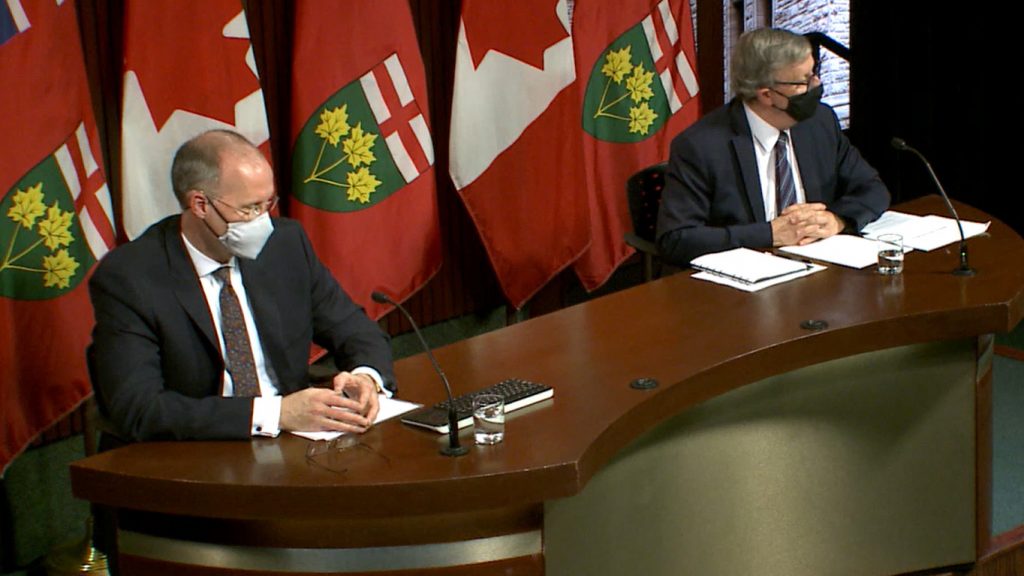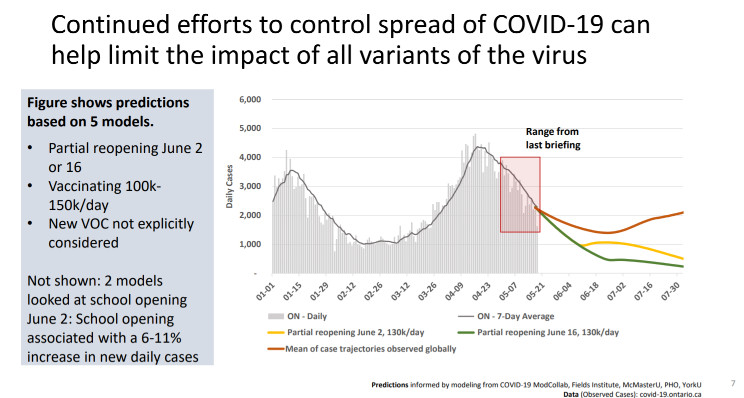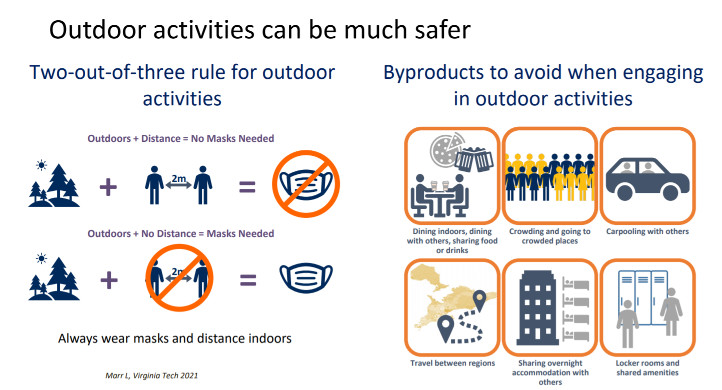New COVID-19 modelling shows pandemic improving; outdoor activities ‘encouraged’

Posted May 20, 2021 1:13 pm.
Last Updated May 20, 2021 2:20 pm.
The COVID-19 pandemic is improving across the province and as long as vaccinations and public health measures are maintained until the middle of June, Ontarians should be in for a “good summer.”
The latest modelling data presented by Dr. Adalsteinn Brown on behalf of the Science Advisory table also suggests outdoor activities should not only be opened up but “encouraged.”
Cases in most public health units, along with hospitalizations and positivity rates, continue to decline with the greatest progress made in hotspot areas such Peel and Toronto. Only eight of the 34 public health units have shown an increase in the weekly number of new cases per 100,000 residents from the period of May 2 to May 15.
In a best-case scenario with Ontario administering 130,000 vaccine doses per day, continued public health measures, and a partial reopening by June 16, the province could see well below 1,000 new daily infections by June 30 and cases dropping below 500 per day by July.
If reopening begins just after the stay-at-home order lifts on June 2, the number of new daily cases are set to fall to around 1,000 per day but remain at that level well into July.
“The direction of the pandemic has turned,” said Dr. Brown. “If we’re careful and cautious, we can maintain this momentum. And this momentum is what gets us to a good summer.”

Premier Doug Ford is expected to provide an update on the province’s reopening strategy later this afternoon.
When it comes to outdoor activities, Brown says residents do not need to wear a mask as long as they maintain a physical distance of at least two metres. If that is not possible, then masking is encouraged. Indoor facilities associated with outdoor recreation, such as change rooms and clubhouses, should remain closed as they present a greater risk of transmission.
The science table remains opposed to indoor dining with others, going into crowded places and traveling between regions.

The data also reveals that while reopening schools will likely create an increase in the number of cases, they “may be manageable” with daily case counts rising between six and 11 per cent. Elementary and secondary schools across the province have been in remote learning since the April break.
The modelling data also suggests that ICU occupancy rates are slowly declining and if the trends continue, we could see fewer than 500 COVID-19 patients in the ICU by the middle of June. At the end of April, the data projected upwards of 900 patients in the ICU.
“The number of people in hospital with COVID-19 has just dropped below the peak of wave two and we still have a very high number of patients with COVID-19 in our intensive care units and a high proportion of these patients remain on life support,” Dr. Brown said.
“Our hospitals remain at risk and it’s our care and caution that will bring them out of this risk.”
The data also shows that while high-priority surgeries are being performed at higher rates, the access to care deficit continues.










